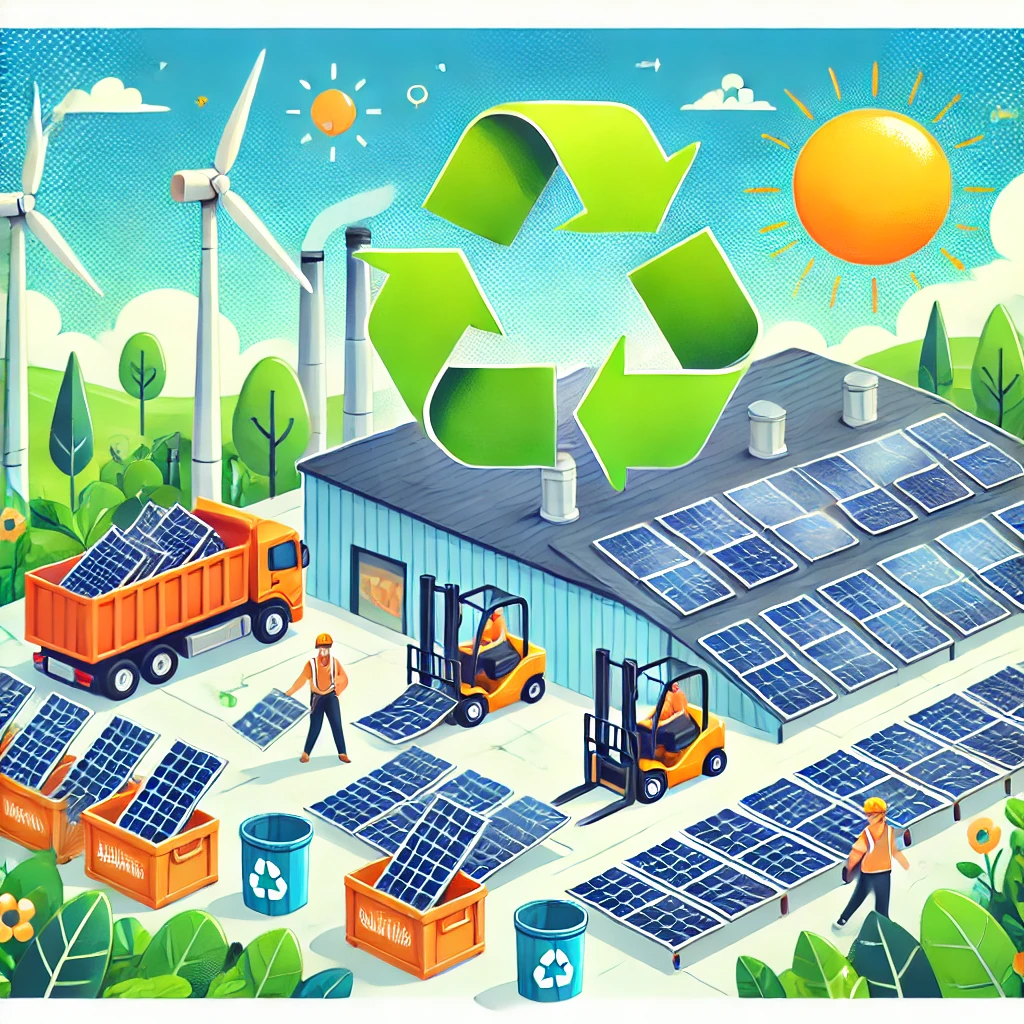As solar energy becomes an increasingly popular renewable energy source, the focus is shifting towards the entire lifecycle of solar panels—including what happens when they reach the end of their lifespan. Solar panels typically last 25 to 30 years, but with millions of installations worldwide, a significant number of panels will soon need responsible disposal. That’s where solar panel recycling facilities come into play. These facilities are crucial for managing solar waste, recovering valuable materials, and supporting environmental sustainability. In this article, we’ll dive into how these facilities work, where they are located, and why they are essential for a greener future.
Why Solar Panel Recycling Facilities Are Essential
While solar panels contribute to reducing carbon emissions, their disposal can pose environmental risks if not handled properly. Panels contain materials like silicon, aluminum, silver, and sometimes toxic substances like cadmium and lead. Recycling facilities play a critical role in preventing harmful waste from ending up in landfills and reclaiming valuable resources for reuse.
Key Benefits of Solar Panel Recycling Facilities:
- Environmental Protection: Prevents hazardous materials from contaminating soil and water.
- Resource Recovery: Reclaims valuable materials like silicon, silver, aluminum, and copper for reuse.
- Support for Circular Economy: Reduces the need for new raw materials, promoting sustainability.
- Regulatory Compliance: Helps meet government regulations for electronic waste disposal.
How Solar Panel Recycling Facilities Operate
Recycling facilities use specialized processes to break down solar panels and recover useful materials. The methods can vary depending on the type of panel, but the general process includes several key steps.
1. Collection and Transportation
- Panels are collected from decommissioned sites or solar farms.
- Specialized transportation is used to safely deliver panels to recycling facilities, especially if hazardous materials are involved.
2. Initial Sorting and Disassembly
- Panels are sorted by type (silicon-based, thin-film, etc.).
- Frames and junction boxes are removed to separate metals like aluminum and copper.
3. Material Separation
- For Silicon-Based Panels:
- Glass is separated and cleaned for reuse.
- Silicon wafers are extracted and refined for new panels.
- Metals like silver and copper are recovered from the cells.
- For Thin-Film Panels:
- Chemical processes are used to separate cadmium, tellurium, and other materials.
4. Purification and Reuse
- Extracted materials are purified and repurposed in the manufacturing of new solar panels or other products.
Leading Solar Panel Recycling Facilities Around the World
Several facilities around the globe specialize in solar panel recycling, employing cutting-edge technology to maximize resource recovery and minimize environmental impact. Here are some of the key players.
1. First Solar Recycling Facilities (Global)
First Solar operates dedicated recycling facilities worldwide, focusing on cadmium telluride (CdTe) thin-film panels. The company’s closed-loop recycling process recovers up to 90% of materials, which are reused in the manufacturing of new panels.
Key Locations: United States, Germany, Malaysia, Vietnam
2. PV Cycle Facilities (Europe)
PV Cycle, a non-profit organization based in Europe, operates a network of solar panel recycling facilities across the continent. They handle both silicon-based and thin-film panels, ensuring comprehensive recycling solutions.
Key Locations: France, Germany, Italy, Belgium
3. We Recycle Solar (United States)
We Recycle Solar is a U.S.-based company with facilities designed to handle all types of solar panels. They offer full-service recycling, from decommissioning to material recovery.
Key Locations: Arizona, California, Texas
4. Reclaim PV Recycling (Australia)
Reclaim PV Recycling is Australia’s leading solar panel recycling company, focusing on recovering over 90% of materials from old panels. Their facilities use advanced technology to ensure efficient recycling.
Key Locations: Adelaide, Brisbane, Melbourne
5. NPC Incorporated (Japan)
NPC Incorporated is one of Japan’s foremost solar recycling companies, specializing in silicon-based panels. Their facilities use innovative techniques to maximize material recovery.
Key Locations: Tokyo, Osaka
6. China Sunergy Recycling Facilities (China)
China Sunergy has developed extensive recycling infrastructure to manage the massive volume of solar waste generated in China. Their facilities focus on both silicon-based and thin-film panel recycling.
Key Locations: Nanjing, Shanghai, Shenzhen
7. Sembcorp Solar Recycling Facilities (Singapore)
Sembcorp Industries in Singapore operates recycling facilities as part of its broader sustainability initiatives. Their facilities focus on responsible disposal and resource recovery.
Key Locations: Singapore
8. Cypark Resources Berhad (Malaysia)
Cypark Resources Berhad runs solar panel recycling facilities in Malaysia, contributing to the country’s green initiatives. They focus on maximizing material recovery while adhering to environmental regulations.
Key Locations: Kuala Lumpur, Selangor
Challenges Facing Solar Panel Recycling Facilities
While the importance of solar panel recycling facilities is clear, the industry still faces several challenges that can hinder growth and efficiency.
1. High Recycling Costs
Recycling solar panels can be more expensive than disposing of them in landfills, particularly for thin-film panels that require specialized chemical treatments.
2. Complexity of Materials
Solar panels contain a mix of materials, making them more challenging to recycle compared to other types of electronic waste.
3. Lack of Infrastructure
In many parts of the world, there is a limited number of recycling facilities, leading to higher transportation costs and reduced access to proper disposal options.
4. Regulatory Gaps
Inconsistent regulations across countries can make it difficult to establish a uniform approach to solar panel recycling, impacting facility operations and efficiency.
The Future of Solar Panel Recycling Facilities
As the solar industry continues to grow, the future of solar panel recycling facilities looks promising. Advances in technology, increased regulatory support, and growing environmental awareness are driving improvements in recycling processes and expanding facility networks.
Emerging Trends:
- Technological Innovations: New recycling methods are improving efficiency and lowering costs.
- Government Incentives: Policies and subsidies are being introduced to support solar panel recycling initiatives.
- Increased Facility Networks: More recycling facilities are being established globally to meet growing demand.
- Circular Economy Models: Manufacturers are designing panels with recyclability in mind, supporting a sustainable lifecycle.
Conclusion
Solar panel recycling facilities are crucial for ensuring that the solar industry remains sustainable from start to finish. By recovering valuable materials and minimizing environmental impacts, these facilities help close the loop in the lifecycle of solar products. As solar energy adoption continues to rise, the role of recycling facilities will become even more critical in supporting a cleaner, greener future.
Whether you’re a homeowner, business, or solar industry professional, understanding the importance of solar panel recycling facilities and supporting their growth is a step towards a more sustainable world.



